Eviction drive on, so is grabbing
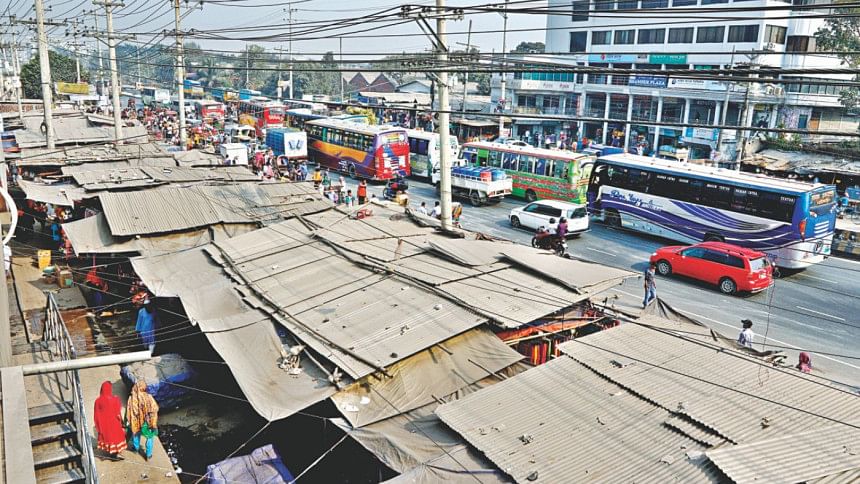
Even as the authorities are removing illegal structures along roads and highways, illegal occupants continue to set up new ones.
Last month, the Roads and Highways Department knocked down 1,725 unauthorised structures and reclaimed around 35 acres of its land, as part of an intensified drive following directives from Road Transport and Bridges Minister Obaidul Quader.
But 1,497 new establishments were erected and 20 acres of RHD land were grabbed during the same month, according to the latest data from the department.
As of January, there were at least 22,536 such structures across the country. Also, 160.05 acres of RHD land are illegally occupied, the data show.
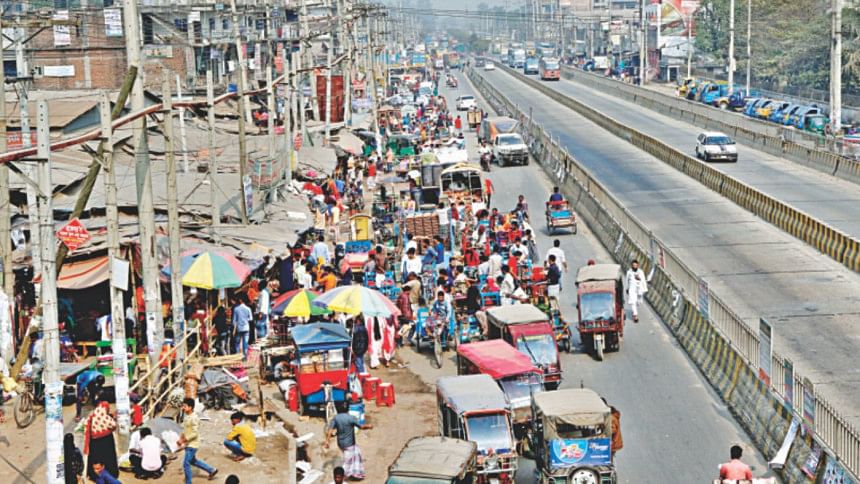
RHD officials said the number of such establishments and the area of occupied land could be higher as the department did not have the latest updates from several of its local offices.
Illegal structures, including unauthorised vehicle stands, markets, restaurants and offices of political parties, set up by roads and highways are often blamed for traffic congestion and road accidents.
Talking to The Daily Star, Kazi Md Shifun Newaz, an assistant professor of Buet's Accident Research Institute, said no structure should be built within 10 metres of any highway.
The structures increase the risk of road accidents as they create visibility problems for drivers. In many cases, people die after being hit by vehicles that overturned following accidents, he said.
RHD officials said inadequate manpower and equipment to conduct eviction drives, legal complications, political influence of illegal occupants and a lack of continuous monitoring were the reasons why the situation was not changing.
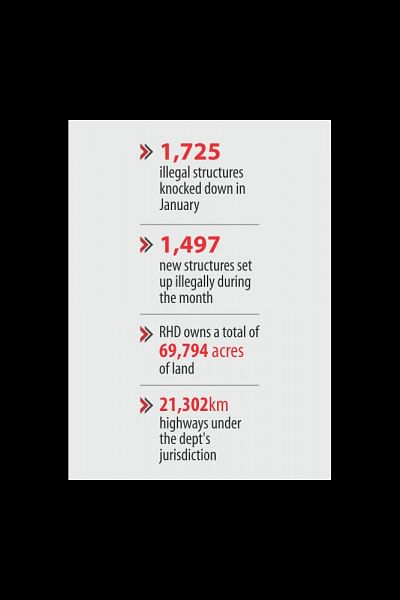
Saiful Alam, RHD's additional chief engineer (maintenance services wing), said, “Recovering land from occupants is a continuous process. We are carrying out drives regularly but encroachers return soon.
“This is a problem but we will continue our drives,” he told The Daily Star on February 6.
The RHD owns a total of 69,794 acres of land in its 10 zones.
There are some 21,302km highways under the department. It includes 3,812km national highways, 4,246km regional highways and 13,242km district highways, according to the RHD's 2017-18 annual report.
Among the 10 zones, Rangpur has the highest number of illegal structures while Rajshahi comes first in terms of illegally occupied land.
Each zonal office regularly carries out drives against encroachment and updates the RHD headquarters and the ministry on a monthly basis, said one official.
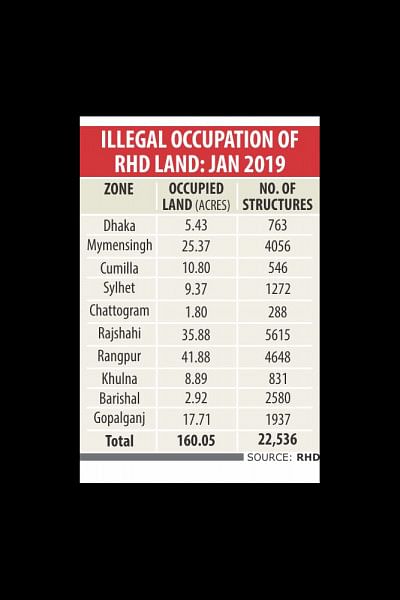
DRIVES IN JANUARY
On January 11, Quader, who has been at the helm of the road transport and bridges ministry for more than seven years now, ordered the authorities to remove all illegal establishments along the roads and highways across the country. It was aimed at bringing discipline on the roads.
Talking to The Daily Star, an RHD official said they did not go for any action against encroachment for around three months before the December 30 national election due to “technical reasons” and resumed its drive following the minister's instruction.
On several occasions in the past, Quader, also general secretary of the ruling Awami League, had directed the RHD to free its land of illegal occupation.
Last month, the highest 14.64 acres of land went under illegal occupation in Mymensingh zone while the lowest -- three decimal -- in Sylhet zone, show RHD data.
Similarly, the highest number of illegal structures -- 679 -- were erected in Mymensingh zone while the lowest -- five -- in Sylhet zone.
The highest 16.93 acres of land were recovered and 836 illegal structures were removed in Rangpur zone last month.
'GROUND REALITY'
Talking to The Daily Star, Roshni-A-Fatimah, superintending engineer (MIS and Estate Circle) of the RDH, said they were conducting drives on a regular basis and intensified those following the minister's latest directives.
Roshni admitted that they could not go for continuous drives and monitor their areas properly. She said they did not have enough manpower.
As a result, the encroachers returned to RHD land.
The RHD has only four estate and law officers who can conduct drives in its 10 zones. It means one officer has to cover more than two zones, said its officials.
Besides, the department needs executive magistrates from the deputy commissioner's office and members from the police for conducting eviction drives. In many cases, it takes time to get them, they said.
Another superintending engineer, with years of experience in the field, said most of the illegal occupants were shopkeepers. Many of them erected illegal structures bribing the local administrations and political leaders.
In some cases, political parties set up offices on RHD land, the engineer said, wishing anonymity.
During drives, occupants often show fake documents, he said, adding that as they could not launch frequent drives, encroachers return within months.
Besides, a sub-engineer has to cover three to four roads on an average. It is difficult for one individual to monitor all those roads frequently, the engineer said.
Saiful Alam, the RHD additional chief engineer, said they were facing obstacles while carrying out drives due to manpower crisis and political pressure.
“It would have been better if we had 10 executive magistrates for the 10 zones,” he said.
He also said that in many cases, they could not continue drives as the occupants get injunction order from courts.
Asked whether they had any deadline to free all the RHD land, he said, “No… There will always be illegal occupants and our drives will go on.”

 For all latest news, follow The Daily Star's Google News channel.
For all latest news, follow The Daily Star's Google News channel. 



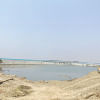




Comments